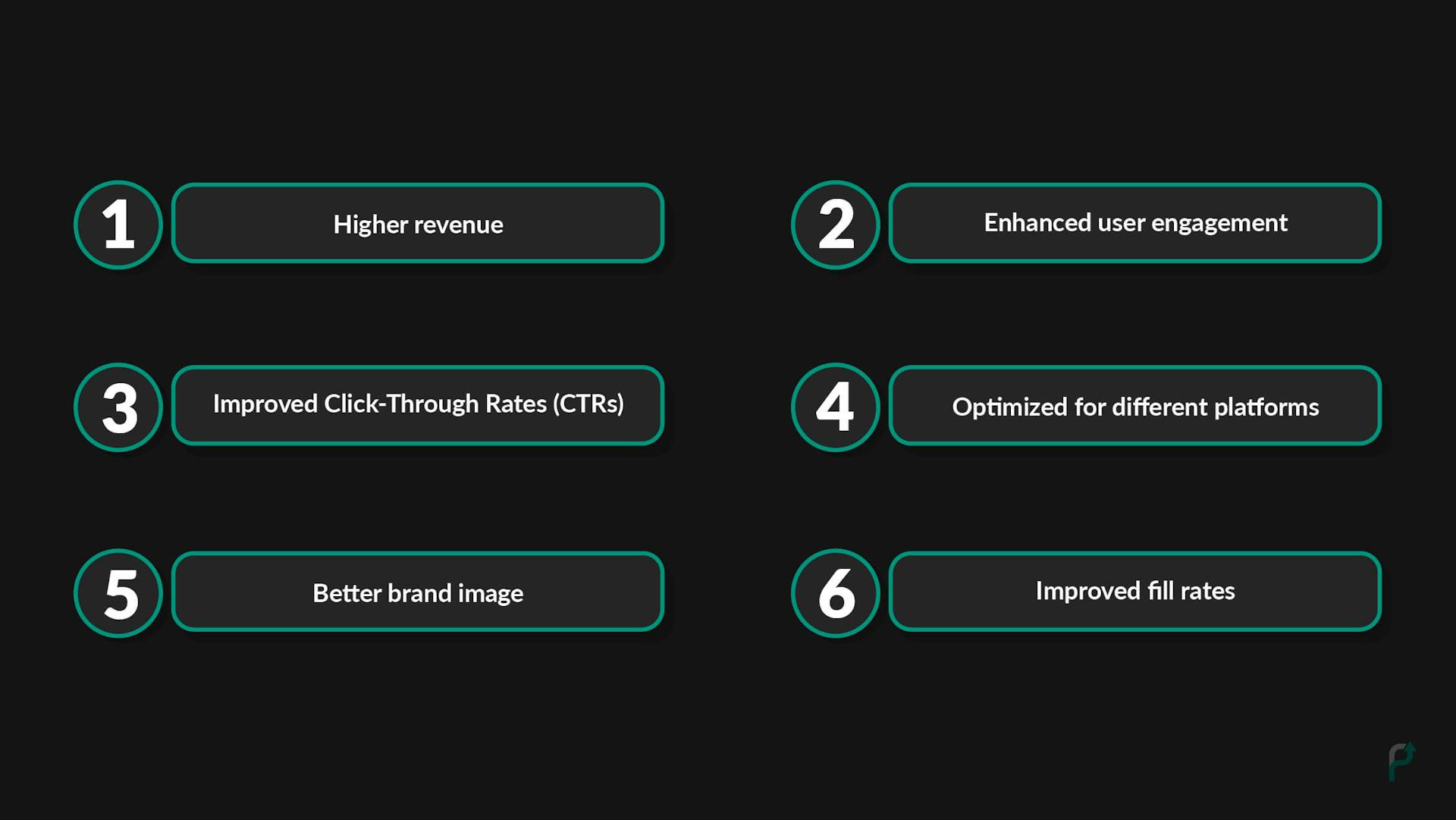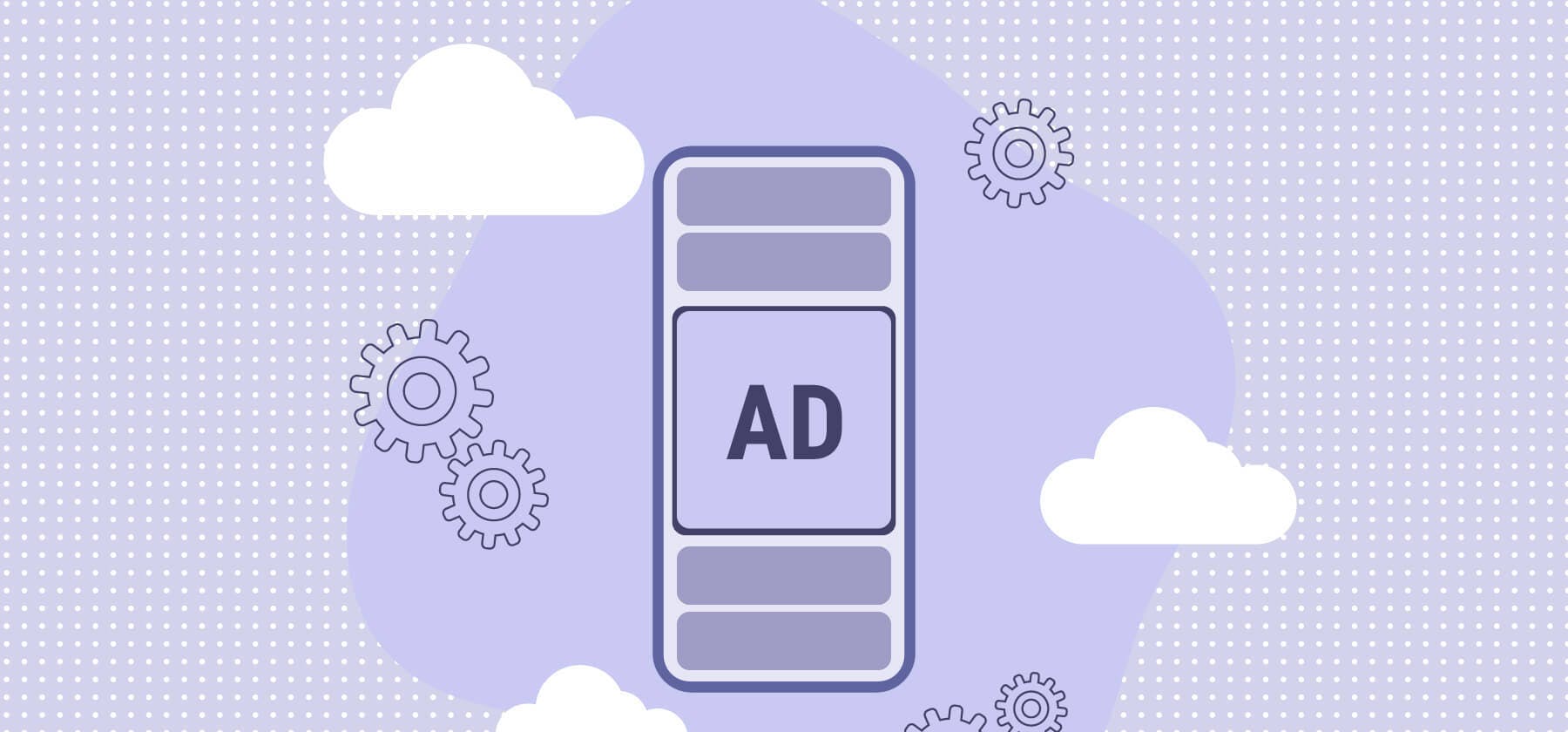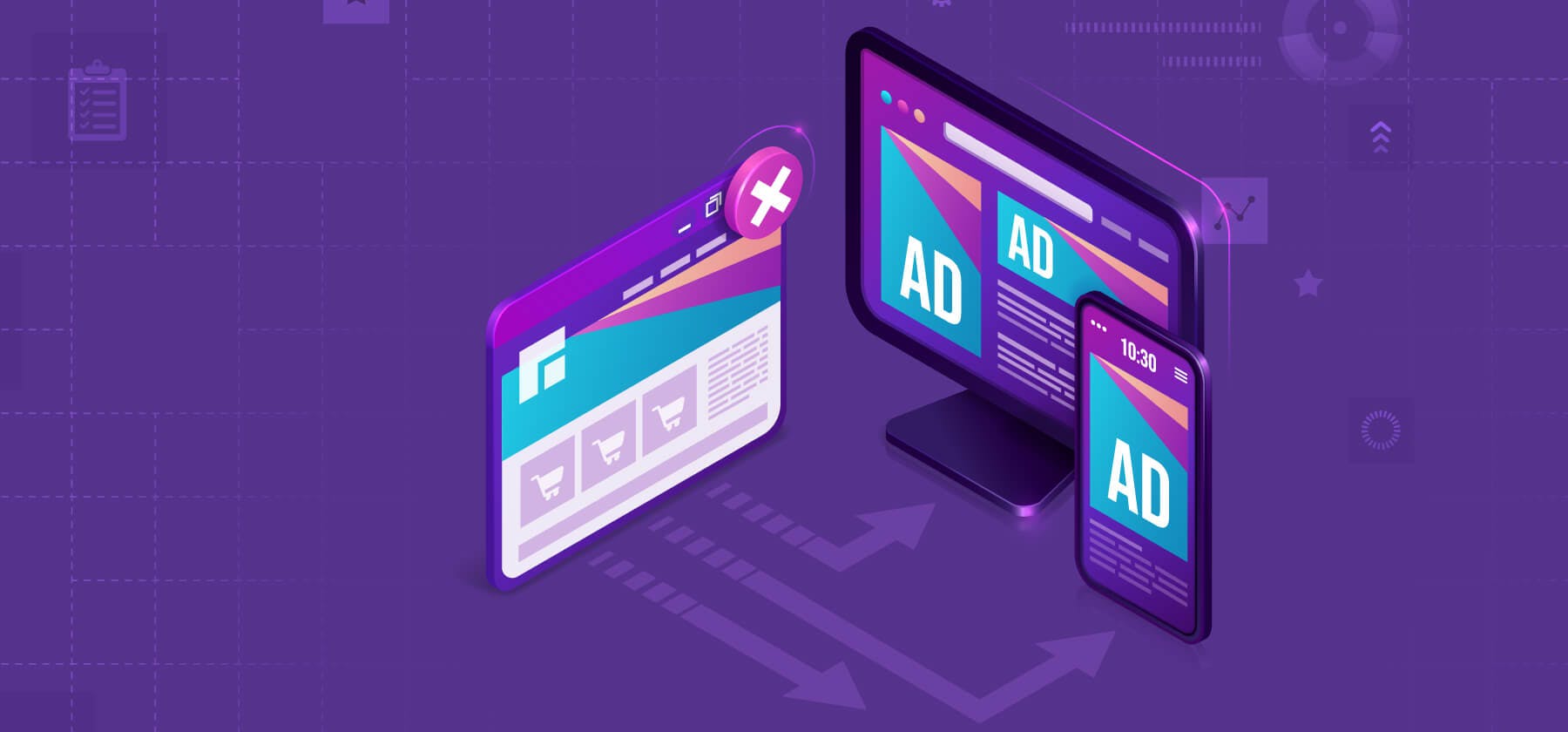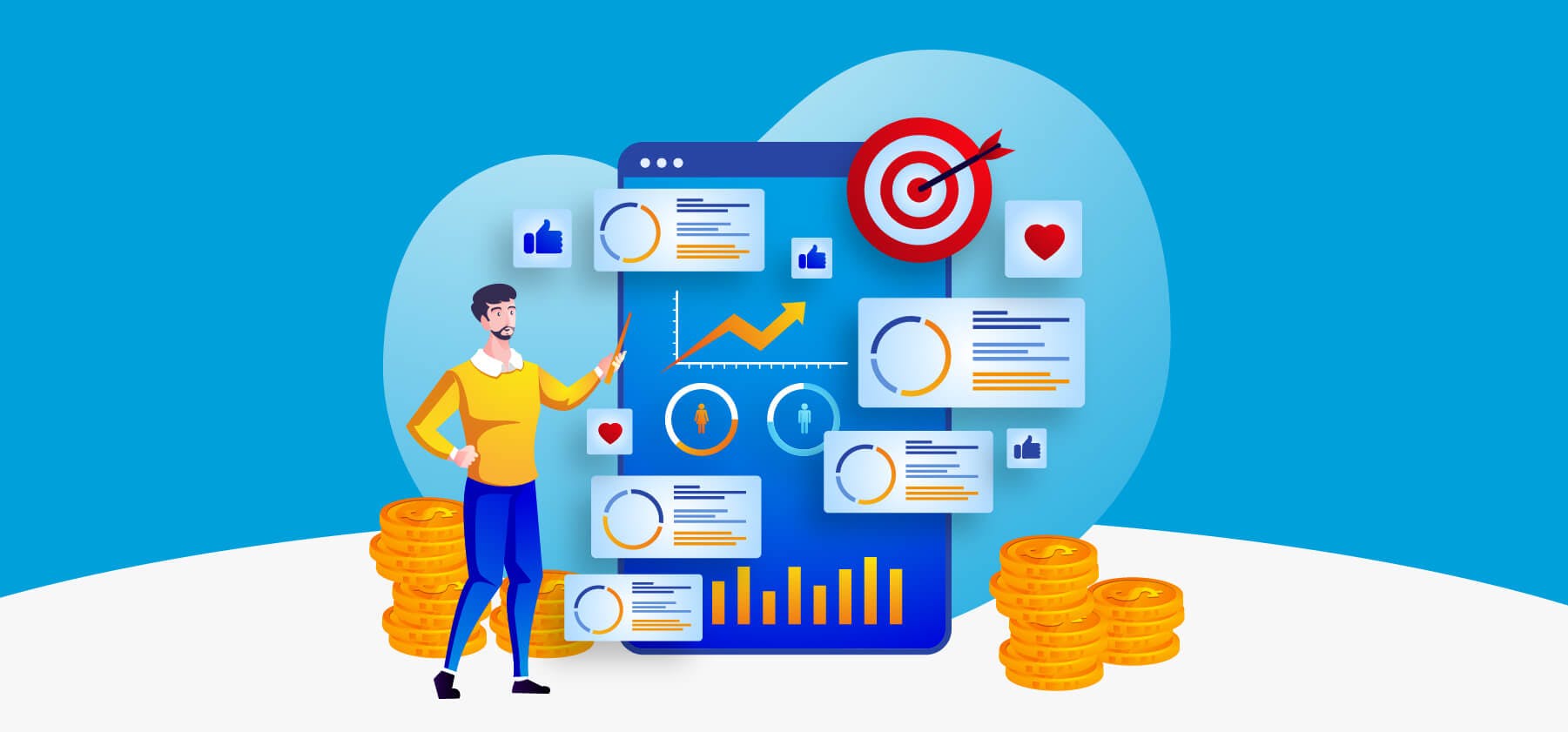- This blog has provided you with a brief overview of the various ad formats available in the programmatic space.
- It has also highlighted the importance of these ad formats in your ad campaigns.
In today's programmatic landscape, digital ads have been an instrumental tool to connect with target audiences, draw their attention, and increase engagement. The driving force behind the effectiveness of digital ads is their ability to constantly evolve. This evolution has brought forth multiple ad formats designed to cater to specific audiences and craft successful ad campaigns.
This blog aims to guide you through the various ad formats available in the programmatic space and how they can help your ad campaigns.
What are ad formats
Ad formats are specific forms of ads that are shown by the advertisers to the users when they visit a publisher's app or website. They vary greatly in terms of content, size, graphic or audio, and resolution.
These ad formats play a crucial role in keeping the audiences interested and increasing engagement rates. They are pivotal in providing a positive user experience since each platform calls for a different ad format and each user’s ad preferences vary.
15 Best Ad Formats
There are numerous popular ad formats employed by advertisers to pique user interest, ensure that they click on the ads, and overall, stay engaged. The most well-known ad formats are as follows.
-
Banner Ads
Banner ads are the oldest ad format in the programmatic advertising space. They appear on apps or websites in different sizes and are usually at the top or bottom of the device screen. Banner ads are called leaderboard ads when placed on top of the page in a prominent location. These ads are also referred to as skyscraper ads when they appear as vertical ads on websites or social media platforms.
They are constantly on the screen while users interact with the app or website. Banner ad formats are usually served in high-traffic areas of the apps or websites. Since these ad formats occur in optimal placements, they usually help attract users easily and prompt them to perform an action, in turn, increasing conversion rates and user engagement.
-
Native Ads
Native ad formats are predominantly suited for apps. These ad formats take on the tone of the app on which they are served on to seamlessly match its look and feel. They are highly non-intrusive since they blend into the users' interface. They occur as recommendation widgets or in-feed content.
Native ad formats are preferred because they are user-friendly and are instrumental in combating ad fatigue. Since they are less intrusive, users are likely to be tempted more to click on them or interact with them. This, in turn, helps boost user engagement. These ads also help generate high Click-Through Rates (CTRs) and thus, help publishers gain higher revenue.
Boost your game's revenue with native ads
-
Interstitial Ads
Interstitial ad formats occur as full-screen ads that cover the interface of the app on which they are served. They usually occur in natural transition points in an app like long pauses between activities or between two levels in a game. They occur in the form of text or video. Users can dismiss these ads easily by clicking on the "Close" button. Some of these ads are time bound and users can skip them only after a certain amount of time.
These ads are preferred since they are mostly immune to ad blockers and provide high viewability. This results in higher impressions and engagement. These ads can be served across platforms.
Another noteworthy part of interstitial ads is web interstitials. These ad formats display full-screen ads on a webpage and usually occur when a user transitions between two web pages. They are designed specifically to captivate users and encourage them to interact.
They are highly visible and ensure that they are noticed. They are also action-oriented and have clear CTAs which can prompt instant reactions from users. They are considerably non-intrusive since they only occur when a user moves from one page to another.
-
Rewarded Ads
Rewarded ad formats are commonly used in games. These ads offer an incentive like in-game currency, power-ups, or extra lives to users when they engage with these ads. These ads are considered user-friendly since they reward users in exchange for their time and attention. This helps increase app engagement rate and conversions significantly.
Rewarded ad formats are successful because they align the interests of users, advertisers, and publishers. Users benefit from receiving valuable rewards, advertisers get engaged viewers, and publishers earn revenue and enhance user engagement and retention.
Rewarded ads can be bifurcated into the following two types:
- Rewarded Interstitial ads: These ads are a hybridized version of the rewarded and interstitial ad formats. They occur as full-screen ads between levels or after reaching certain milestones. Users have the option to either close the ad or engage with it and claim incentives in exchange. These ad formats take up the whole screen, guaranteeing higher visibility and interaction. These ads also enable publishers to generate higher revenues than standard interstitial or rewarded ads.
- Rewarded Instream video ads: These ad formats support ads that appear before, during, or after a video. These ads are found on various platforms like video streaming platforms and social media. They are significant in grabbing the users' attention and are a firm favorite among publishers. These ads are sought after because of their ability to tell impactful stories, offer good Returns on Investments (ROIs), increase conversion effectively, and allow increased engagement with the audience.
Maximize your game's potential with rewarded ads. Don't miss out on extra revenue!
-
Instream Video Ads
These are rewarded ads that offer an incentive to users if they watch a short video within the app or game that they are using. They usually play seamlessly within the app during natural breaks between games or browsing.
They have high engagement rates since the user willingly opts to watch and engage with them. They are also instrumental in driving up in-app purchases. For instance, if a user watches a video and earns in-app currency, they can spend it on in-app purchases.
-
Outstream Video Ads
Outstream ad formats are video ads that are served in a non-video environment. They can appear in the middle of articles, social media feeds, or anywhere within an app or website. They are also known as in-read video formats or native video formats. They are designed to be non-intrusive and play without audio unless the user wants it to.
Since they do not require video players to run on, they are supported outside traditional video formats and can reach a wider audience. They are often integrated within the content present on the app, making them feel like a part of the domain and less intrusive. These ad formats also offer clickable call-to-action (CTA) buttons, encouraging immediate interaction and conversions.
-
Instream Audio Ads
Instream audio ads are seamlessly integrated into audio content like music or podcasts. They are played during natural breaks in the content, like between songs or during pauses in a podcast episode. Instream audio ads are typically audio-only and do not include visual components, making them a non-intrusive way to deliver promotional messages to listeners.
Instream audio ads enable advertisers to target specific demographics and audiences based on factors like location, user preferences, and listening habits. This precision allows for more relevant and effective advertising.
These ad formats can attract listeners easily since they are highly receptive to audio messages when it is played while listening to a podcast or a song. In doing so, instream audio ad formats can effectively attract users and transform them into potential customers. Audio ads also have an auditory appeal since they can be served in creative ways, using stories, music, or voiceovers. This, in turn, helps scale conversions with ease.
-
App Open Ads
App open ads typically appear when a user opens your app and comes across an ad that promotes another app. These ads are displayed before the app content finishes loading and they typically cover the entire screen. These ads are meant to catch the user's attention and drive monetization.
Since app open ads are served on a full-screen, they make it difficult for users to ignore, resulting in higher visibility. They also appear at optimal times when an app is loading or when a user moves from one app page to another. Since the user is more receptive during these times, these ads are considered to bring high user engagement.
-
Offerwall Ads
Offerwall ads are a type of ad format that incentivizes users to interact with them. Offerwall ads can occur in the form of filling out a survey, signing up for an in-app subscription, watching a video, or making in-app purchases. These ads appear in dedicated areas within a mobile or gaming app at natural pauses.
These ads are usually activated by users, making them non-intrusive. Thus, they occur as an integral part of the app. They are immersive and do not hamper user experience. They also guarantee conversions since they are opted for by users themselves.
Ready to turn your players into payers? Try offerwall monetization today
-
Widget Ads
Widget ad format involves placing interactive ad units or widgets within an app or a website. They occur as polls, puzzles, calculators, chatbots, registration links, and more. These ads are focused on delivering an engaging user experience with interactive and personalized content.
These ad formats can boost conversions effectively by providing personalized information that appeals to individual users. They also capture users' attention since they are interactive and can increase engagement rates easily.
-
Sticky Footer Ads
A sticky footer ad, also known as a catfish ad, is an ad that appears as a horizontal section at the bottom of a web page. Users are usually provided with an option to close the ad using a button.
These ads have clickable CTAs and help drive conversions directly. They are unobtrusive since they do not cover the main content of the page. This results in an improved user experience.
-
In-Page Push Ads
In-page push ads are an ad format that expands beyond the confines of the usual push ads. These ads take the form of widgets that overlay website pages or appear when a user scrolls down a webpage. They are not as intrusive as web push ads and offer a distinctive avenue for delivering pertinent messages to the intended audience.
A significant divergence from traditional push ads is when it comes to in-page push ads, users need not subscribe to receive in-page push notifications. As long as a user visits the publisher's website, ads can be delivered without disrupting their browsing experience.
These ads do not disrupt the user experience, leading to higher click-through rates (CTR) compared to typical banner ads. Additionally, these ads ensure that users are not immune to them since they function quite similarly to banner ads.
-
Parallax Ads
Parallax ad formats are layered visual ads that are interactive and move at different speeds as the user scrolls or interacts with the content. They are usually constantly present in the background of the content and are also referred to as a “flying carpet”. These ads create a subtle element of depth and are meant to captivate the users.
Since these ads are visually engaging, they encourage users to explore and interact more. Users can interact with these ads by clicking, scrolling, or tapping, resulting in increased user engagement. They also help in effective branding since these interactive elements can be leveraged to send effective messages.
-
Pop-up Ads
Pop-up ads are usually small windows or banners that are served over content a user is viewing within an app or website. They are usually triggered by actions like clicking a link or visiting a particular page.
Pop-up ads are attention-grabbing and can highlight new features with ease. Additionally, publishers can earn revenue by displaying pop-up ads from third-party advertisers in their apps. Further, when used sparingly, pop-up ads can inform users about important app-related information.
-
Rich Media Ads
Rich media ads are typically interactive and visually engaging. They can include elements like videos, animations, and more. They provide users with an immersive experience.
These ads can highly increase engagement and entice users to take action. Rich media ads often command higher ad rates, which can lead to increased revenue for app publishers. Furthermore, interactive elements in rich media ads can drive user engagement, such as app downloads, sign-ups, or in-app purchases.
How will the right ad format benefit publishers
 How will the right ad format benefit publishers
How will the right ad format benefit publishersPublishers must choose the right ad format to ensure monetization and user engagement. Publishers need to research and understand the ad format that suits their monetization goal best before they choose one. There are numerous benefits for publishers if they leverage the right ad format. Some of them are as follows.
-
Higher revenue
The right ad format results in increased clicks and conversions, resulting in higher revenue for the publishers. Advertisers pay more for ad formats that are engaging or interactive. So, publishers can leverage such ad formats and boost their ad earnings.
-
Enhanced user engagement
Ad formats that align with the content and do not disrupt user experience are usually preferred by users. They play a huge role in increasing user engagement and conversions.
-
Improved Click-Through Rates (CTRs)
Well-designed and strategically placed ad formats tend to have higher CTRs. They are more likely to entice users into interacting with and clicking on them.
-
Optimized for different platforms
The right ad format is optimized for multiple devices like mobile phones, desktops, and tablets. Leveraging such ad formats will help publishers access a larger audience.
-
Better brand image
Ad formats can create visually appealing experiences and can help enhance a publisher's brand image and credibility. Showing users that the publisher values user experience can help attract users and high-quality advertisers.
-
Improved fill rates
It is crucial to choose the right ad formats to boost fill rates. When ad formats align with audience interests, relevance, and strategic placement, they attract more advertisers and user engagement, leading to improved fill rates and revenue.
Self-plug on PubScale
PubScale is a one-stop, app monetization platform that offers publishers a wide range of ad formats to help scale their user engagement and retention. From basic formats to advanced ones, PubScale provides numerous options for publishers to leverage and stay ahead of the curve. The ad formats are as follows.
- Banner Ads
- Native Ads
- Interstitial Ads
- Rewarded Ads
- Rewarded Instream Video Ads
- Rewarded Interstitial Ads
- Instream Video Ads
- Outstream Video Ads
- Instream Audio Ads
- App Open Ads
- Offerwall Ads
- Widget Ads
- Custom Ads
- Sticky Footer Ads
- Web Interstitial Ads
- In-Page Push Ads
- Parallax Ads
Conclusion
It is vital for publishers to understand and select the right ad formats to succeed in their monetization journey. Each ad format comes with its set of pros and cons depending on the content it showcases and the domain it is served on. Publishers have a vast array of formats to choose from but ultimately their choice must be driven by their goals, target audience, and the overall experience they aim to provide.
The only ad platform built for developers by developers.
Contact us now for a product that fits your needs! It’s quick, simple and easy.



